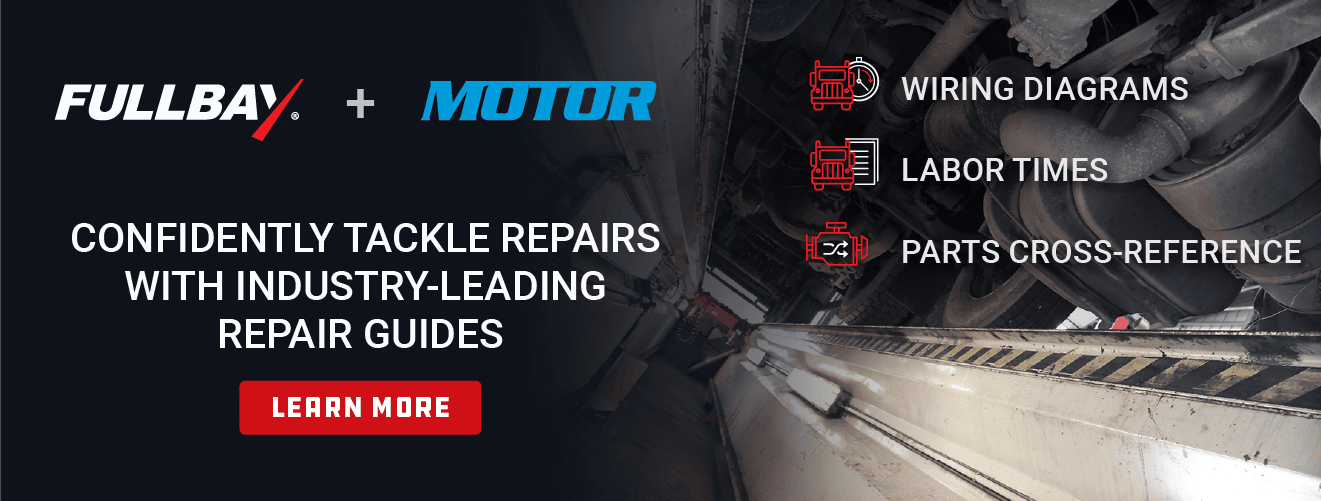Enter the Matrix: Parts Pricing Made Easy

Is it possible to use the word matrix in something and not reference The Matrix?
Buckle up, friends. We’re about to find out.
In Enter the Matrix, our latest webinar, Jacob and Chris talked all about the intricacies that go into recouping costs and how Fullbay can help a shop create a price matrix. Now, contrary to popular belief, a price matrix is not something that helps you defeat evil; it’s a pricing structure that allows flexibility in how you earn revenue.

As you can imagine, it’s pretty important for shop owners to at least have a working knowledge of pricing matrices, so we were excited to get this webinar going. Unfortunately, they could not get Keanu Reeves to join.
(Side note: It is apparently not possible to say matrix without multiple Matrix references. It may even be illegal.)
Happily, they did get someone famous and all-knowing: Irvin Bowman, President of Wayne Truck & Trailer Ltd., to join them. Irvin was one of Fullbay’s earliest adopters, and he brings a wealth of knowledge regarding parts markup, price matrices, and just running a repair shop to any conversation he joins.
It’s a great webinar, and we highly recommend giving it a listen here (or scrolling down for the embedded version). But for now, read on for a high-level look at what was covered and what to expect!
THE COST OF SELLING PARTS
You can’t really put together a price matrix without fully understanding the costs surrounding selling parts, both across the counter and as part of your repair and maintenance services. Selling parts is not a pass-through situation; it takes effort and money to manage your inventory.
Here are two pro tips from the webinar:
Mind your carrying costs, especially for parts that don’t get invoiced. As Chris reminds us, “It costs money to store.” And it’s not just purchasing parts, either—you need to pay the courier service that brings them to you, and any taxes on them, and then whatever you’re paying to keep them in a storage area or warehouse instead of sitting outside in the elements.
Everyone’s heard the horror stories of expensive parts that go un-invoiced. The webinar dives deep into why this happens—and to no one’s surprise, it’s not always malicious. “It’s an infuriating thing,” Irvin says, “to find out how much your inventory tends to walk out the door. It’s not necessarily someone trying to steal; people get in a hurry. [A tech] might grab a part, put it on a truck, and forget to put on the service order.”
Make sure you track your cores. If you forget to return a core to a vendor, Jacob warns, “that comes straight out of your bottom line.” Keep your cores in a safe spot and hold your techs accountable to grab the cores and put it where it needs to go.
The three also discuss several other ways to recoup the cost of your parts, including:
- Charging for shop supplies
- Using a markup or margin
- Using a parts scale and matrix
Did someone say matrix?
What a great segue. Shall we…
ENTER THE MATRIX
A parts pricing matrix is where you introduce, says Jacob, a third dimension (“or even a fourth or fifth,” Chris adds), to your revenue efforts. This is where you can leverage multiple scales by creating a price matrix driven by which customer, part, or vendor is involved. Utilizing matrices can have a huge impact on your revenue.
The guys then put together and tinkered with several parts matrices using Fullbay’s built-in tools. You can follow along with them by watching the video below:
We’ll leave you with one more fascinating takeaway: Irvin is a firm believer that your shop has a margin it needs, while your parts department has a margin it needs.
“If you’re handling wholesale parts,” he explains, “you need to be able to make a margin with what you’re selling across the counter—but that doesn’t have to be the same margin as something you’re selling in your shop.”
In short, you don’t have the warranty, labor, and all the expenses associated with putting it on a vehicle in your shop. Accordingly, what you charge for a part you install vs. what you charge to hand a part to a customer who then walks out the door may vary. A matrix can help you balance those separate requirements and keep you on track to meet your revenue goals.
For even more wisdom (and maybe a few more Matrix jokes), check out the entire webinar!
